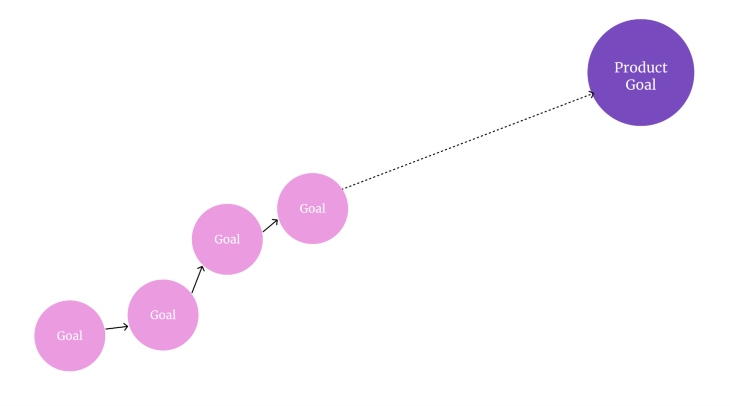Workshop facilitation is a skill that can make or break your career as a UX designer. Yet, it’s often neglected for the sake of more technical skills. That’s a mistake.
Let’s explore why this skill is crucial and how to run better UX workshops.
Why UX designers should master workshop facilitation
The truth is, you probably run more workshops every month than you think.
At first, UX workshops might seem scarce. Some people see them through the lenses of fully-fledged design sprints or initiative kickoffs.
But not every UX workshop needs to be a full day of work. In reality, a two hours long, focused meeting is a workshop on its own, and how well you facilitate it dictates how far it’ll push you.
Even without thinking about it, you run
- discovery workshops
- empathy workshops
- design workshop
- prioritization workshops
- critique workshops
regularly.
Make sure to make the best out of them. Each of these workshops is a chance to propel or push you backward with your progress.
How to run a great UX workshop
There’s no single recipe for a great UX workshop. The
- scope
- people involved
- challenge
- time available
heavily influence how a good UX workshop should look.
However, some universal tips are applicable in the majority of cases. Mastering them will help you boost your facilitation skills in all cases.
Stick to one primary goal
This tip might seem obvious, but people still ignore it.
There are good intentions behind that. We often want to use our limited time together to achieve everything we can. But it backfires.
One primary goal for the workshops helps
- design the agenda properly,
- invite the right people,
- frame the conversations right,
and allows you to regularly self-check if you are proceeding toward the goal or if something needs adjustments.
It’s better to run five smaller, individual workshops tackling five smaller objectives than to have one unfocused meeting.

Balance group size and expertise
Finding the perfect group size is tricky.
On the one hand, the fewer people you invite, the more dynamic and focused the conversation tends to be.
On the other hand, inviting more people gives you more expertise and diverse points of view.
However, many people seem to miss that your group size doesn’t have to be static throughout the workshop.
Build a small “core team” that will be present during all exercises and invite subject-matter experts to parts where their skills might be valuable.
For example, if you mainly want to invite the marketing VP to get some of their ideas, invite them only for the ideation part. Yes, they could be helpful and insightful during other exercises, but you must also respect people’s time and ensure the group isn’t oversized.
Share fact packs before the meeting
The more prepared the participants are, the more productive the workshop will be.
My go-to tactic here is creating and sharing fact-packs a few days before the workshop starts. The concept is most common in consulting firms and works as follows:
- Gather all relevant information on the topic at hand
- Summarize it until you get a one/two-pager of key details
- Share it with invited people and ask them to read through it before the workshop
While the process of creating the fact pack is time-consuming, it usually pays back tenfold when you don’t have to spend half of your workshop time explaining concepts to participants.
Manage decision-making batteries
Have you ever heard the tip, “Don’t make the big decisions late in the day”?
It originates from the fact that we all have a limited decision-making reservoir. The more decisions we make throughout the day, the harder it becomes to make new decisions. The likelihood that we’ll make a poor decision also increases.
A great facilitator keeps that in mind when designing the workshop. Here are four things you can do to save this energy for the most critical decisions.
Spread decision-making
The fastest way to drain decision-making batteries is to force people to make decisions for a few hours in a row.
A well-designed workshop should alternate between exercises where decisions are made and ideation/discussion sessions.
Consider small trade-offs
Small decisions in exercise design can impact people’s decision-making batteries.
Take dot voting, for example. A common practice is to limit the number of votes per person. That forces people to make a conscious decision.
But if you are just gauging people’s opinions, maybe giving people unlimited votes is better. It would make the final results less reliable, but you’d still achieve your exercise goal without draining decision-making batteries.
Be conscious of which exercises drain decision-making power.
Delay non-urgent decisions
If a decision isn’t needed to achieve the workshop goal, just delay it.
Don’t waste time and energy on things that don’t move the needle.
Don’t overthink small decisions
If a decision is essential but has a small impact, I wouldn’t spend too much time on it.
Just choose the most competent person in the room to make a call, make the call, and move on.
It’s surprisingly easy to fall into the trap of spending effort on decisions that aren’t even important.
Alternate solo and group brainstorming
Solo brainstorming wins when it comes to the volume of ideas. Group brainstorming wins when it comes to fueling creativity and collaboration.
Take the best of both worlds.
Whenever you brainstorm, follow the three-step process:
- Start with solo brainstorming. It’ll result in a wider variety of ideas
- Share the results with the whole group. No discussions yet
- Go back to solo brainstorming. Inspired by other answers, people might find even more creative solutions
Repeat it a few times if needed.
Keep exercises short
Productive exercises feel short.
As a rule of thumb, if everyone in the room believed there was ample time for the exercise, then it was too long.
Keeping exercises slightly too short:
- forces everyone to focus on what is truly important
- gives pressure that helps to keep people alert and energized
- helps to save the time
You can always revisit some specific parts after the workshop.
Gather feedback on the go
It’s a common practice to ask for feedback after the workshop.
But that’s too late.
Not only you can’t move back in time, but you can’t even use that feedback in the future — each group of individuals is different and will have different expectations.
Instead, ask for feedback during the workshop. For example, do it after every exercise or every hour.
This will help you adjust your approach on the go and make the best out of everyone’s time.
Be abundant with breaks
Breaks are an investment, not a cost.
A proper break:
- helps people regenerate energy
- allows them to catch up on Slack and emails so that they don’t do it during exercises
- gives them a space to think
I recommend 7 minutes roughly every 53 minutes as a natural rhythm. Fifty-three minutes are enough to do some heavy exercises, and seven minutes seems like a sweet spot. Five minutes is often too short and forces people to rush, while ten minutes tend to kill the momentum.
Add some longer (30m+) breaks on top of that.
Ultimately, I believe in spending 70 percent of the time on exercises and 30 percent on breaks.
Golden ratio: 70 percent exercises : 30 percent breaks
Trust me. You’ll be more productive than if you squeezed 20 extra minutes into exercises.
Summary
UX designers facilitate more workshops than they think. Sometimes it’s a fully-fledged design sprint. Sometimes, it’s an hour-long design critique session.
To some extent, every meeting you lead is a form of a workshop.
And the effectiveness of these workshops directly translated to the effectiveness of your design process, which in turn contributed to the effectiveness of your career.
While there’s no single recipe (every workshop is different) there are a few universal tips applicable in the majority of the cases:
- Have one clear goal
- Balance group size
- Share fact packs before the meeting
- Be conscious of decision-making energy
- Alternate solo and group brainstorming
- Keep exercises short
- Gather feedback early
- Don’t skimp on breaks
Implement these tactics in your workshop routine, and you’ll 2x your performance as a UX designer.
Header image source: IconScout
LogRocket: Analytics that give you UX insights without the need for interviews
LogRocket lets you replay users’ product experiences to visualize struggle, see issues affecting adoption, and combine qualitative and quantitative data so you can create amazing digital experiences.
See how design choices, interactions, and issues affect your users — try LogRocket today.
Source link







Leave a Reply